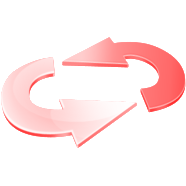Point of Sale Hardware – Basics
POS hardware can vary widely depending on the given application it can be as simple as an iPad and as complex as a fully integrated dedicated touch screen terminal with accompanying cash drawer and receipt printer. While it is important that the hardware is reliable, durable and up to date it pales in comparison to the importance of the software that runs the POS system. (For more information on POS Software be sure to read the article on Point of Sale Hardware.) Given that the hardware take a back seat, it is still important the quality components are used. Basic Components of a modern Electronic POS System: Touchscreen Display Barcode Scanners Scales and Pole Displays Receipt Printers Debit/Credit Card Reader Cash Drawer Computer / Monitor / Peripherals Cabling, Routers, Switches These are just basic components and the point of sale software is not limited to this. There may also be less than the list above, with a basic setup only consisting of only a touch screen terminal or tablet...
Read MoreHow to Choose the Right POS Software
It’s clear that Point of Sale software is essential to just about all businesses, large or little. Whatever your financial allowance is, it’s mandatory that you find a reliable POS software program that suits your requirements. In America popular software suites include Micros and Aloha however they can be expensive. More affordable solutions such as Harbortouch or Sage Light may not provide the robust features your business needs. Here are a few pointers to consider while searching for the correct POS software solution. 1. Equipment Compatibility The software program solution package should be compatible with the latest hardware available for sale including touch screen displays, terminals, thermal printers, charge card swipers, paperless personal pads, wireless bar code stock scanners and other standard peripherals. There are many convenient hardware add-ons that accelerate checkout and enhance the overall customer experience. It is important that the software you pick is compatible with a wide range of hardware and devices. 2. Easy User Interface The interface ought to be intuitive as well as user-friendly. It ought to be designed so that brand new users may pick this up and get accustomed to it quick without a lot hassle. Many POS systems and software programs have really counter-intuitive as well as complicated user-interfaces, which can cause problems and slow down customer service time. Easy user interface is especially essential for new employee training. Imagine needing to intensively teach every brand new staff member a complicated and cumbersome system. A simple user interface eliminates the manpower and time wasted on this step. 3. PCI Conformity Compliance with PCI (Payment Card Industry) standard implies that the software program can link seamlessly together with your selected merchant account securely. This means the added security necessary to secure the actual cardholders’ information and data. PCI compliance is also an essential security requirement that each business which processes credit and debit cards are forced to follow. 4. Compatibility With 3rd Party Plugins and Apps Whatever software program bundle you purchase should be suitable for other 3rd party plugins such as online ordering, social media and accounting software programs. It should be able to work effortlessly with software program like Quickbooks and other major developers. Depending on your business type online ordering or eCommerce may be a critical part of your business. Be sure the POS you buy integrates your brick and mortar operations with your online ones. Marketing and social media apps have become very popular in the recent decade. Integration with loyalty program where customers can interact with your business effortlessly is important from a community based marketing approach. On top of these basic concerns you need to ensure that the seller or reseller themselves is versed in the latest point of sale technologies and techniques. Avoid opting for non-local service providers who cannot correctly support the software once installed. Many sellers will offer the service on a purchase or rental basis. Basically you need to ask is the POS package offered as a Software-as-a-Service (SaaS) or will you need to pay the onetime charge? Can you lease the software through the provider? Do they have a trial period in which you can return the product should it not meet your needs? Ask the seller or reseller to supply testimonials associated with customers utilizing their restaurant or retail point of sale systems. Ensure a sufficient product demo or trial period to check if the POS will work with your given application. The couple of points provided above as well as your own company analysis should offer a sufficient insight and help you make a better POS...
Read MoreGuide to Retail and Restaurant POS
A Guide to Retail and Restaurant Point of Sale Systems Are you having problems managing your company financial statements? Are you tired of manually taking inventory? Do your eyes hurt from trying to read the handwriting of your cashiers, servers or managers? Read this article carefully and understand how to make your business life easier. Leave those labor-intensive, tedious, and time consuming tasks behind because a robust POS system will take care of them for you. What is this System? A POS system utilizes a computer instead of a cash register in goods exchange transactions. Basically, a point of sale system can handle transactions such as inventory, printing receipts and invoices with facts about the transactions, and it can also handle card payments. A point of sale can be utilized by retail stores, restaurants, hospitals, hotels or any establishment that requires payment transactions. Retail Point of Sale System For the retail industry, their POS is rather complex and less standardized compared to that of the Restaurant POS industry. For this system, it usually consists of a monitor, cash drawer, printer for receipts, scanner for barcodes and inventory, debit/credit card scanner, and of course a computer. More advanced systems have all-in-one units with touch screens. A retail POS system is capable of handling sales, returns, gift card transactions, exchanges, layaway and loyalty programs. Most systems also can handle advanced features such as promotional sales and multiple forms of payments. In some retail environments, there are a number of POS units available on the floor in various locations for actual checkout while a back office computer handles the inventory and other financial aspects of the business. The back office “brain” all-encompassing machine is also capable of producing sales reports, trends, and cost analysis. You can see this kind of system in supermarkets and malls where there are multiple cashiers using this system. Restaurant Point of Sale System The restaurant point of sale system is simpler and a more versatile system compared to retail. This is because in the restaurant industry, the point of sale’s main function is to track orders, print checks, receipts, customer orders and financial reports. These systems are usually used by big fast food chains and sit down restaurants and bars / nightclubs; however they are also commonly used in café and quick service environments. For fast food chains, you might have noticed that the cashiers have headphones; this headset system is actually an additional feature for the restaurant point of sale system to allow the employees to communicate easily. Similar devices are also available for the kitchen including, impact printers to deal with heat and customized kitchen display units. The POS Industry Point of Sale does not only provide easier financial transactions but enhances the overall management scheme of a company. It is advisable to choose wisely when selecting a particular POS system especially when picking the software and reseller / servicing company. Most companies provide trial software as well as interactive demos; restaurant POS expert like Dinerware have many online demos and videos that restaurateurs can check out. Other major players in the restaurant POS are Micros, Aloha and Harbortouch. For the retail industry the choices are much more diverse with larger merchants creating their own customized solutions. However, many smaller merchant have had success utilizing Intuit’s POS and Apple’s Checkout. Because there are so many different companies that provide point of sales software and systems, as a buyer, you really can design your own system to suit your own needs. So what are you waiting for? There is a system out there that would help you with all the cumbersome...
Read MoreWhat is a Point of Sale System?
A common question that new business owners ask is, “What is a point of sale system?” More accurately business owners want to know how a POS system can help improve commerce for their business. There are many benefits from a transactional and financial standpoint that new or existing business owners should know. This is specifically true for retail and hospitality businesses where tracking inventory and multiple customers simultaneously is critical for operations. For a basic overview of what a point of sale system is and the three (3) most common configurations be sure to check out our Point of Sale page. For a more in-depth look at restaurant and retail POS along with a look at POS hardware and software check out our series of posts starting below. What is a POS System? POS is an acronym for Point of Sale and is often used interchangeably with the term Point of Purchase (POP) or checkout. However typically when the term POS or Point of Sale is used the user is referring to the hardware and / or software configuration used at the place of commerce. While historically this was the only option, even today it is common to see a basic manual cash register. However with the advent of bank cards and credit card processing, the need for electronic components such as a credit / debit card terminal became necessary. This has led to the development of fully integrated Point of Sale configuration or ePOS setups which today can be anything from a full computer station to an iPAD and custom app. Point of Sale configurations vary widely depending on the application. What is used in a restaurant or retail environment can be very different than what is needed for mobile or online merchants. While the basics are the same, the specific requirements of the merchant can change the solutions drastically. For more information on the different type of point of sale configurations use one of the following links to navigate directly to a POS specific page. POS defined and basic modern configurations – Point of Sale Overview Advanced and integrated solutions – Dedicated Point of Sale Systems For more specific information about point of sale in both a restaurant and retail environment as well as hardware and software applications use the links below. You will also find consumer friendly information on this site including “How to Choose the Right POS” and top brands among other topics. Point of Sale Further Defined (Click Link Below) Guide to Retail and Restaurant POS POS Evolution: Retail and Hospitality Point of Sale Software Point of Sale Hardware How to Choose the Right...
Read MorePoint of Sale (POS) Reviews
What is the Best POS Solution? Many small business owners ask “What is the best point of sale system?” This largely depends on the type of business and the scope of transactions. The first determining factor that an owner must look at is the industry that their company competes in. There is a large difference in the type of POS needed for the following industries… Hospitality: (Restaurants, Nightclubs, Quick Service, Fast Casual, Take-Out Food, Hotels) Retail: (Grocery, Convenience Stores, Clothing, Boutique, Shops, Consumer Goods) Mobile: (Home Delivery, Contractors, Repair, Technicians, Painters, Plumbers) Online: (eCommerce) For the most part, the need for point of sale is the most critical in hospitality (restaurants) and retail due to the need to track inventory and multiple customers simultaneously. Mobile merchant typically have custom needs and online merchants can typically handle their needs with a robust shopping cart software solution. When it comes to the basic local merchant there are a few standout software solutions that are the best. We highlight and review these two solutions, Dinerware for restaurants and Cash Register Express for retail, in detail at BestPOSSystem.com our partner educational site. These two solutions were picked not based solely on amount of features but a combination of price, functionality, features and ease of use. For more details be sure to check out Best POS...
Read MoreThe Merchant Statement Fee
The Fee is not Just for the Paper Every month millions of businesses are charged a statement fee in association with their card processing merchant account. Many ask the question, “Why am I getting charged so much to get a few sheets of paper each month.” Merchant statement fees are commonly $10, $12 even $15 and there is a large misconception that this fee is only related to the packet of paper that summarizes the card processing for the previous month. The truth is that most organizations have an “account on file fee” associated with every merchant account they board. This fee is typically based on how many accounts an ISO (independent sales organization) has with the processor and can be anywhere from $0 to $5. It is also common for sales agents to be restricted by a statement fee “buy rate,” meaning that they can not charge less than say $5. The account on file fee is designed to account for the monthly cost of doing businesses associated with each account, which includes, preparing and sending a paper statement to the merchant, even if they do not process a single card. How to Eliminate the Statement Fee It is common to see statement fees from $5-$15, if you are paying much more than this, call your account representative and find out why. Additionally, most processors and sales organizations offer to remove or reduce the statement fee if the merchant moves to paperless (online) statements. If this is not an option, or if you prefer paper statements, it is likely that the sales organization or agent will reduce this fee should you ask. This is especially true if you have increased processing volumes since the account was first established. An important piece of information to know is that, the two major tools that sales organizations use to protect or keep their merchant accounts are via the statement fee and monthly minimum. These fees are commonly used in calculations for termination clauses. They are also used as ways to guarantee a minimum level of revenue, should a merchant account become dormant for any reason. So do not expect to completely eliminate this fee, however ensure that what you are paying is...
Read More








 Speak To A Specialist -
Speak To A Specialist -